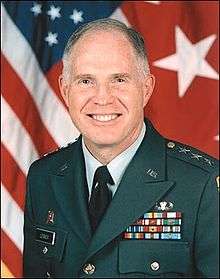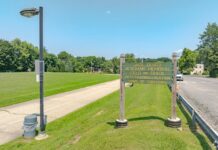
Yonkers native Lieutenant General William Lennox, Jr.,
By Mary Hoar, City of Yonkers Historian, Revolutionary Yonkers 250 Chair, President Emerita Yonkers Historical Society, recipient of the 2004 Key to History, Member of the Yonkers Landmarks Preservation Board, and President Untermyer Performing Arts Council
Monday, June 3rd
June 3, 1936: Vic Petersen’s puppy Tip was the first dog ever to attend an installation of the Protective Order of Elks; he attended the ceremony for Grand Exalted Ruler Ed Murphy. Tip, better known as the only Yonkers dog with his own bank account, frequented his owner’s restaurant at Lake and Nepperhan Avenues. Customers threw the pup tips; he caught the money, then deposited the coins into an iron bank. That evening, he collected $8 from generous Elks.
June 3, 1943: Eighth Ward Supervisor Thomas Fournier announced he was resigning to enlist in the Army and expected his wife Dorothy would complete his term. She did, serving until December 31st, but declined to run for another term.
Tuesday, June 4th
June 4, 1918: The Board of Supervisors passes a resolution to offer the War Department the old Yonkers Armory on Waverly Street to use as a hospital.
June 4, 1920: Yonkers people who attended the Knights of Columbus field mass at St. Mary’s Cemetery relived the experience in local movie theaters. Shot by Whitman-Bennett Studios Chief Cameraman Tom Griffith, the film showed close-ups of the huge crowd.
June 5th
June 5, 1946: New York Central Railroad released a booklet describing the historic significance of Philipse Manor Hall.
Besides the history of the Hall, the brochure described the box hedge “descended” from the original hedge planted by Frederick Philipse. Boyce Thompson Institute staff propagated many, many cuttings from the original shrubbery and used them to replant the hedge.
The booklet also featured trees planted by Yonkers’ Keskeskick Chapter NDAR. Not only did they plant cedars from Washington’s birthplace in Wakefield, Virginia, on the grounds, they planted a very special elm tree. The elm was grown from a cutting of the very tree Washington stood under to assume command of the Continental Army.
June 5, 1952: Peene’s Wharf, 75 Dock Street, was auctioned in the City Council Chamber. The property, 46,000 square feet of land and 38,000 square feet of underwater, was assessed at $43,000. An unidentified person bid $26,250 for the property; the bid had to be approved by the Common Council before the sale was final.
Thursday, June 6th:
June 6, 1927: A Yonkers landmark and one of Westchester’s oldest “hostelries,” closed its doors for the last time. Francfort’s Inn at New Main Street and South Broadway would be replaced by a gas station.
June 6, 1934: New Yonkers Board of Education President Maurice Blinken ran his first meeting as president; the first item of business was ordering an investigation of the school scholarship funds invested in the closed Westchester Trust Company’s mortgage certificates.
June 6, 1949: Thanks to the employees of the Yonkers Post Office, a letter addressed to the “Meow-Meow Bookshop, Yonkers, NY,” found its way to the right place, the Alicat Bookshop on South Broadway!
Friday, June 7th
June 7, 1938: Because of an injured dog and a devoted master with mechanical skills, Yonkers was able to brag about one of our own creating the latest innovation for injured animals. Robert Forsberg’s dog Chum was hit by a car near the Saw Mill River Road service station his owner managed. After refusing to put Chum to sleep, Frosberg took his pet to another vet who said the pup suffered from a severe concussion but would “come around in time.” During Chum’s recovery from his physical wounds, Forsberg wanted to ensure he got enough exercise. He designed and built a wheeled apparatus with straps that supported Chum’s tummy and hind quarters; the dog happily chased the stones and sticks Forsberg threw while motorists on Saw Mill River Road stopped to watch the pup on what looked like “a kiddie car.” When Chum’s legs got stronger, his devoted owner took him swimming to continue to build his strength.
June 7, 1945: General Joseph W. Stilwell, graduate of School Six and Yonkers High School, recounted an incident while serving in China. Stilwell often visited the front without his official insignia. As he was crossing a stream, he heard a young private on the other side comment to his fellow soldier, “Just look at that poor old man. Some draft boards will do anything!”
Saturday, June 8th
June 8, 1924: While repairing Main Street just below Riverdale Avenue by the telephone building, workers unearthed a grave. In it, they found remains of one of Yonkers’ earliest settlers and an Indian tomahawk.
June 8, 2001: Yonkers native Lieutenant General William Lennox, Jr., assumed duties as the 56th Superintendent of the United States Military Academy at West Point.
Sunday, June 9th
June 9, 1907: Yonkers Detectives Cougle, Mance, Scheibel and Cooper and YPD police officers stopped all baseball games in Yonkers; they arrested five men as a test case for the legality of Sunday baseball. Thomas McCarthy, Louis Sterling, James Riley, Joseph Staubach and Fred Manny of the Yonkers Club of the Hudson River Baseball Leagues were charged with violating Section 2645 of the Penal Code; they had engaged in a game of baseball at League Park on Saw Mill River Road.
June 9, 1952: Building Inspector Jack Dalrymple inspected rubble from the demolition of the original School Six, opened in 1862 and closed in 1937. The rubble had to be cleared since Yonkers was building a new school on the site of the original school, once known as the John Mason School. The school, named after the man credited with pioneering Yonkers education, memorialized the man who served as President of the School Six Board for years.
Questions or comments on this column? Email YonkersHistory1646@gmail.com.
For information on the Yonkers Historical Society, Sherwood House and upcoming events, please visit our website www.yonkershistoricalsociety.org, call 914-961-8940 or email info@yonkershistoricalsociety.org





